Поэтика мифа - [163]
The third part is concerned with mythology in the 20th century literature, novels almost exclusively. The novel was previously as far from mythological motifs as it could be, but became the field of modernist renaissance of myth now. Mythology united with in-depth micropsychology and symbolic leitmotifs, which can be traced bade to Wagner musical drama, became an instrument of material organization in the modem novel, on its way of classical forms transformation and detachment from the traditional 19th oen-tury realism. The social-historical approach determined the structure of the 19th century novel to a large degree. Attempts to go beyond its rigid framework or above its level could not but shatter this structure. Unavoidably the empirical life material, social material as it is, became more spontaneous and unorganized, which was compensated by the action becoming internal (inside monologues, stream of consciousness, subconscious complexes) and symbolic, even mythologically so. Myth being totally symbolic, turned out to be a-convenient language for description of eternal models (archetypes) of personal and social behaviour, certain existential laws'of social and natural cosmos indistinctly apparent against the background of empiric context and historical changes; myth developed info an instrument of the structural analysis of the narrative, rid of social-historic and space-time aspects, fo-cussing up.on revealing the metaphorically eternal generalized contents. The mythological approach conditioned by an in-depth» psychological analysis is not levelled at social types or individual characters but at some everyman emancipated of social context. Here the catalyst was psychoanalysis especially its Jung variant, which is nothing but a paradox since the true origin myths are still aimed at unconditional subordination of personal emotions to the social cosmos. The gap between the unhealthy psychology of a lonely or oppressed individual of the 20th century and the pre-reflective, extremely social psychology of archaic communities could be only bridged at the expense of modernization of the origin myth; the awesome span separating a modern man from authentic original creators of myths is mollified by irony and selfirony. A deeper understanding of myth in the 20th century novel (as compared even to the 19th century romantic novel) is blended even more than in ethnology (but backed by modern theories of myth and analytical psychology and ritualism in particular) with modernization tendencies characteristic of the 20th century social situation.
The literary mythology of the 20th century is indebted to modern theories of myth and in the first place to those of Frazer and Jung. The «sacred marriage» and «scapegoat» models were borrowed by Lawrence mainly from «The Golden Bough». In T. Mann's «Magic Mountain» the amorous attachments of Hans Kastorp and later of Pepercorn with madame Chochat, the suicide of Pepercorn, numerous hints at initiation rituals and many other items correspond to Frazer's ritualemes of agrarian festivities with the «sacred marriage», ritual death of the kingpriest, etc. Of the same stock are frequent allusions to the myths of dying and resurrecting gods in T. Mann's «Joseph and his Brothers». T. Mann's and Joyce's symbols of eternal resurrection and rejuvenation. In «Finnegan's Wake» Joyce also makes use of the Buddhist and anthroposophic variants of metempsychosis and reincarnation and of Vice's and Quinet's cyclic ideas. The organizing principle in «Finnegan's Wake» and «Joseph and his Brothers» is, along with the cyclic factor, the view of myth as a collective unconscious in an individual's mind which is close to Jung theories.
Not all 20th century literary neomythologicai theories went as far as creating its own poetics of mythologizing. The necromantic apology of myth on the contents level (Nietzschean in Lawrence's works and national revolutionary in many of the «third world» writers' books) should be differentiated from the proper mythologizing poetics employed for genre formation (Joyce, T. Mann, Marquez, Updike and many others) and this latter one from spontaneous mythicizing, that is constructing a symbolic universal model by myth-like fiction using no traditional mythological images (Kafka). It is the comparison of Kafka and Joyce that gives one a clear idea of the contemporary basis of modernistic mythologizing poetics.
The poetics of mythologizing features some permanent traits – such as the well-known contraposition of history and universal psychology (based on analytical psychology), mythological syncretism and pluralism, elements of irony and travesty, the use of cyclic ritualistic mythological reiteration (supported by ritualism) to express universal archetypes, «fluidity» of dramatis personae and easily changeable social roles and masks, elements of absurd aesthetics (the Levy-Bruhl idea of the prelogic contributes to that), etc. Comparison of dramatis personae in «Ulysses» and «Odyssey», transformation of the Irvicker family into Celtic legend heroes, identification'of several generatipns of Biblical heroes in «Joseph», all this lays emphasis on universal reiteration of archetypes and the feeling of insoluble nature of some basic collisions characteristic of a 20th century western man. Contrary to inevitable travesty, everything merges on the mythological level (eg. promiscuous singer Molly and devoted Penelope merge in a single image of the fertility and love goddess; compare: madame Chochat and Venus; fidgety running of wretched Bloom and the wanders of Odyssey the epic hero, etc.). This is stressed by piling up parallels from different mythologies, often resulting in comparison to incompatible personages (Bloom, for example, is not only Odyssey, but at the same time Adam, Moses, Wandering Jew and even Christ) which once more emphasizes the vagueness of boundaries between themes and dramatis personae, the single unaltering essense under various masks, for Joyce it was inanity of history.

"Лет через десять после начала войны и лет через шесть после ее окончания я встретился с профессиональным военным корреспондентом Тихомировым. Мы спали на соседних нарах в исправительно-трудовом лагере "П". Лагерь был лесоповальный, с лесопильным заводом, но к моменту нашей встречи мы уже оба были "придурками", то есть служащими, а не рабочими, и жили в бараке для административно-технического персонала. В лагере, так же как и на фронте, идеализируется долагерное (довоенное) прошлое и во всяком случае усиливается желание утвердить себя за счет своего прошлого перед соседом.
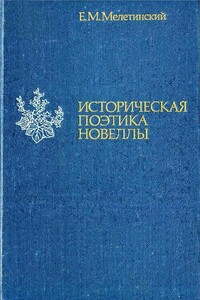
В книге на материале всемирной литературы рассматриваются вопросы происхождения жанровой структуры, формирования классических форм новеллы и ее дальнейших судеб на Западе и на Востоке вплоть до начала XX в. Основные разделы: ранние формы новеллы (новеллистическая сказка и анекдот, восточная новелла, средневековая, европейская новеллы), классическая новелла Ренессанса, романическая новелла XVII—XVIII вв., романтическая новелла XIX в., реалистическая новелла XIX в.

Диссертация американского слависта о комическом в дилогии про НИИЧАВО. Перевод с московского издания 1994 г.
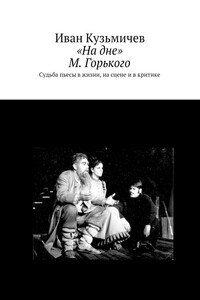
Книга доктора филологических наук профессора И. К. Кузьмичева представляет собой опыт разностороннего изучения знаменитого произведения М. Горького — пьесы «На дне», более ста лет вызывающего споры у нас в стране и за рубежом. Автор стремится проследить судьбу пьесы в жизни, на сцене и в критике на протяжении всей её истории, начиная с 1902 года, а также ответить на вопрос, в чем её актуальность для нашего времени.
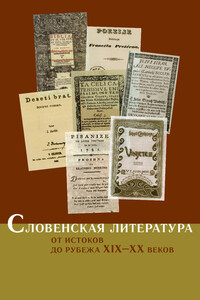
Научное издание, созданное словенскими и российскими авторами, знакомит читателя с историей словенской литературы от зарождения письменности до начала XX в. Это первое в отечественной славистике издание, в котором литература Словении представлена как самостоятельный объект анализа. В книге показан путь развития словенской литературы с учетом ее типологических связей с западноевропейскими и славянскими литературами и культурами, представлены важнейшие этапы литературной эволюции: периоды Реформации, Барокко, Нового времени, раскрыты особенности проявления на словенской почве романтизма, реализма, модерна, натурализма, показана динамика синхронизации словенской литературы с общеевропейским литературным движением.
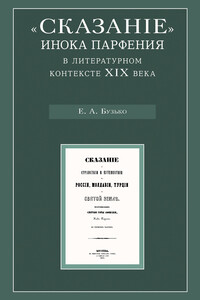
«Сказание» афонского инока Парфения о своих странствиях по Востоку и России оставило глубокий след в русской художественной культуре благодаря не только резко выделявшемуся на общем фоне лексико-семантическому своеобразию повествования, но и облагораживающему воздействию на души читателей, в особенности интеллигенции. Аполлон Григорьев утверждал, что «вся серьезно читающая Русь, от мала до велика, прочла ее, эту гениальную, талантливую и вместе простую книгу, — не мало может быть нравственных переворотов, но, уж, во всяком случае, не мало нравственных потрясений совершила она, эта простая, беспритязательная, вовсе ни на что не бившая исповедь глубокой внутренней жизни».В настоящем исследовании впервые сделана попытка выявить и проанализировать масштаб воздействия, которое оказало «Сказание» на русскую литературу и русскую духовную культуру второй половины XIX в.
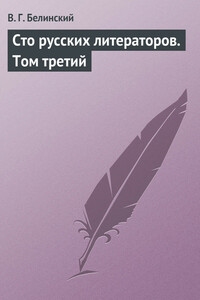
Появлению статьи 1845 г. предшествовала краткая заметка В.Г. Белинского в отделе библиографии кн. 8 «Отечественных записок» о выходе т. III издания. В ней между прочим говорилось: «Какая книга! Толстая, увесистая, с портретами, с картинками, пятнадцать стихотворений, восемь статей в прозе, огромная драма в стихах! О такой книге – или надо говорить все, или не надо ничего говорить». Далее давалась следующая ироническая характеристика тома: «Эта книга так наивно, так добродушно, сама того не зная, выражает собою русскую литературу, впрочем не совсем современную, а особливо русскую книжную торговлю».